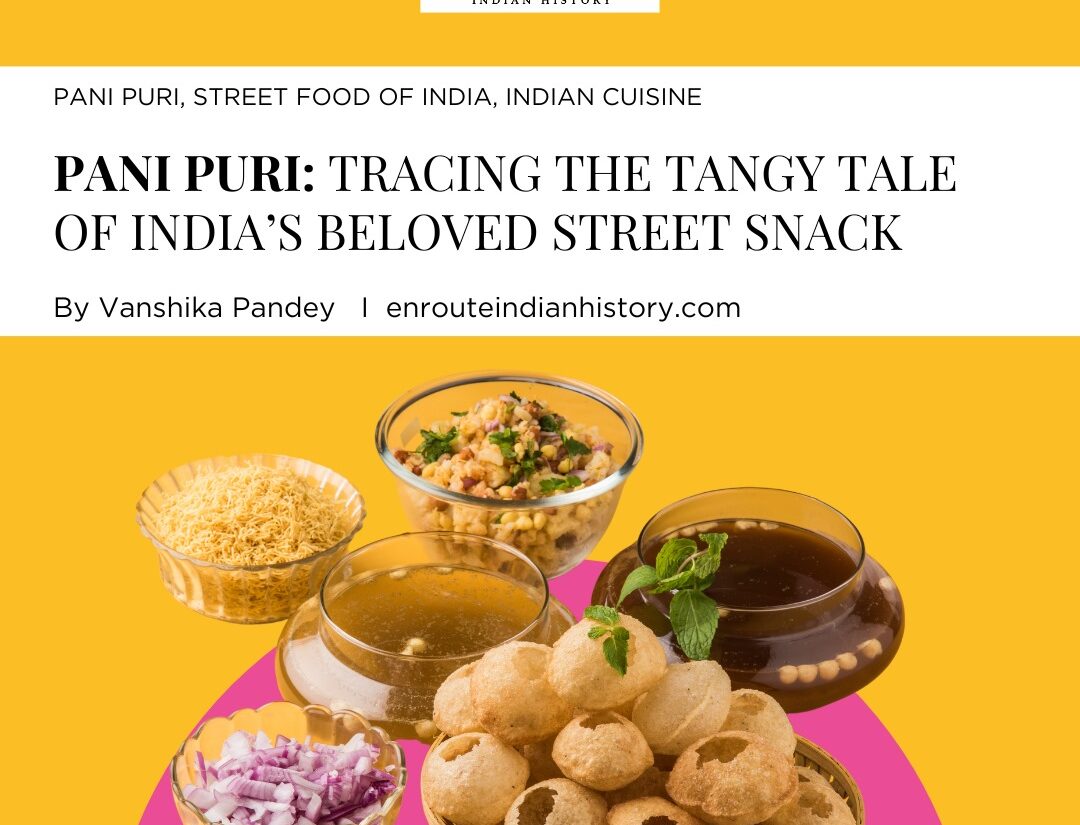Sinking teeth deep into the bhutta to pull out the kernels while licking the masala mix smeared over fingers is an unsaid winter tradition for Indian hearts. The simple joy of biting into a freshly roasted bhutta brushed with the flavours of lemon and salt on a chilly winter evening while soaking in the warmth of the bonfire transcends state boundaries. From Delhi’s blood-freezing winters to Assam’s unpredictable cold winds, eating the tender kernels from a bhutta brings the older and younger generations together. Surprisingly, India’s beloved ‘corn on the cob’, known as bhutta, was never Indian in the first place.

Bhutta in India brings warmth to the winter season with its tangy flavours. (Credits: Love Laugh Mirch)
With a history dating back 10,000 years, corn finds its roots in the highlands of America. Despite the fact that corn had not arrived in India until about 400 years ago, it soon found itself a home in the land of curries and spices. Known as ‘makai’ popularly, corn took on different shapes in different parts of the country; Punjab in the north savoured it in the form of flatbreads known as ‘makke ki roti’,’ while Tamil Nadu in the south prepared ‘sweet corn sundal’ as a religious offering (prasadam) for the gods. In the midst of such delicacies arose the roasted corn on the cob, or bhutta, which became the perfect companion for the monsoon and winter seasons across the country.
HOW DID CORN COME TO INDIA?

The ‘Mayan Corn God’ by Mary Jane Miller. (Credits:Pixels)
The ancestor of modern corn, known as teosinte, was a type of wild grass that was found and cultivated by natives in the warm and sunny country of Mexico in Northern America. The kernels of the wild grass bore no resemblance to the corn grown today; they were much smaller and not arranged in a cluster like we see in corn now. In the eyes of the Mayans who inhabited Mexico, corn quickly evolved from a mere agricultural product to a symbol of their culture. According to the Mayan creation theory, humans were created out of corn. The corn played such an important role in the Mayan way of life that they even created a god to represent it and worshipped him by the name of Hun Hunahpu.

A painting from 1867 by William Simpson depicts Indian women grinding corn. (Credits: Pixels)
When explorer Christopher Columbus discovered America in 1492, he also came across the staple food of the American natives, corn. After a year, he introduced corn to Spain, where it rapidly proliferated throughout Europe. Corn was first introduced to India by Portuguese merchants in the 16th century; however, it was primarily cultivated by wealthy farmers and remained in Goa for a significant amount of time after its arrival. Corn spread to other parts of India in the nineteenth century when the British Agri-Horticultural Societies began importing corn varieties to develop the culture of commercial crops in India. Grown alongside millet because of similar characteristics, corn cultivation soon took over the fields in India. At present, corn ranks as the third most significant food crop both cultivated and consumed within the nation, following rice and wheat. However, it is interesting to note that recent research in the field of Indology suggests that corn was already familiar to people living in the Indian subcontinent before it was brought there by Portuguese traders. In the temples of Somnathpur and Hoysala, which were constructed between the 12th and 13th centuries, depictions of corn ears have been discovered, which leads one to speculate that corn may have been an important crop during those eras. This, nevertheless, is the subject of intense debate.

A sculpture built around 12-13th centuries in Somnathpur, India, depicts a god holding corn ears. (Credits: Bharatkalyan)
THE QUEEN OF WINTER STREET FOOD: BHUTTA
As the popularity of corn rose in the fields and markets of India, so did it in the kitchens too. From finding space in the spicy curries to tangy chats, corn became a favourite of many. The roasted corn on the cob, also known as bhutta, was by far the most well-liked of all of these options to be savoured in the monsoon and winter seasons. Despite the fact that corn may have been discovered in America, masala bhutta is an Indian dish through and through.

A woman is selling roasted corn cobs in India. (Credits: Geray Sweeney)
Bhuttas are typically consumed as a form of street food, and the individuals who sell them on the street are referred to as bhuttawallas. These street vendors make use of a coal fire or an open grill to roast the bhutta. Once roasted, the bhutta is brushed with lemon and dipped in an assortment of Indian spices, which include black salt, red chilli powder, chaat masala, or dry mango powder (amchur). The generous amount of spices that are brushed on the Indian street-style bhutta, which gives it an authentic taste, is what differentiates it from roasted corn on the cob found in other parts of the world. The seasoning of Indian street-style bhutta is comparable to that of Yaki-Toumorokoshi, which is a Japanese dish consisting of roasted corn on the cob coated in soy sauce and grilled. In India, corn is grown throughout the year; however, the production and popularity of bhutta increase significantly during the monsoon and winter seasons. The decrease in temperatures and the onset of chilly winds make it the perfect weather to enjoy something warm and tender. Even before getting to taste the tender kernels of the bhutta, waiting for the bhutta to get roasted close to the coal furnace brings warmth during the cold winter days. Bhutta, which is rich in fibre and carbohydrates, also provides the body with the energy it needs to endure the cold weather, thus acting as winter nourishment.

Indian-style corn on the cob, also known as bhutta, is roasted in a coal furnace. (Credits: ChezShuchi)
The roasting of a bhutta is traditionally done in a coal furnace or coal fire; however, in recent years, many vendors have switched to using open grills because it is a faster method. As people become more health-conscious, they are opting for options that are less unhealthy, such as boiling their bhuttas rather than roasting them. Bhuttawalas of today often have a steamer set up next to their coal furnaces so that they can also serve boiled bhuttas to their customers. This shift may also be attributable to the fact that sweet corn is becoming more popular in the street food market in India.The market for bhuttas is being taken over by sweet corn, also known as “corn in a cup,” because of its nutritional value, easy-to-eat texture, and the variety of seasonings that are available. Unlike bhuttawalas, who make use of a single mix of spices, sweetcorn sellers these days provide a menu at their vans that primarily consists of black pepper mix, Italian mix, and punjabi mix. In contrast to roasted bhutta, sweet corn can be used in a variety of other dishes, such as corn-based appetisers and curries, thereby increasing the versatility of corn. The process of roasting requires a significant amount of attention to detail, unlike boiling, which is one of the main reasons why many bhuttawalas are transitioning towards sweet corn vans.
RECIPE OF MASALA BHUTTA
All things considered, bhutta is and will continue to be the first love of Indians, both inside and outside of the nation, despite the popularity that sweet corn has gained. Here’s an easy-to-cook recipe of masala bhutta to try when pining for the aromatic flavours and tender kernels.
Ingredients:
- Bhutta
- Butter
- A lemon
- A bowl of masala (spice) mix made of salt, red chilli powder, and chaat masala powder
Instructions:
- You must remove the husk and silk from the corn ears to prepare the corn for roasting.
- Place the bhutta directly on the gas stove with caution and rotate every 30-45 seconds. It can also be roasted by using an oven or outdoor grill.
- Roasting should continue till the bhutta is charred.
Once roasted completely, remember to brush the bhutta with butter. Cut the lemon and dip a slice of it in the masala mix, then rub it over the roasted bhutta.
Your masala bhutta is ready to serve!
REFERENCES
- paliwal, A. (2023). Indian Style Roasted Corn – Masala Bhutta. [online] My Ginger Garlic Kitchen. Available at: https://www.mygingergarlickitchen.com/indian-roasted-corn-on-the-cob-masala-bhutta/
- Doctor, V. (n.d.). Enter the maize: How corn from the Old World replaced millet in India. The Economic Times. [online] Available at: https://economictimes.indiatimes.com/magazines/panache/enter-the-maize-how-corn-from-the-old-world-replaced-millet-in-india/articleshow/77044755.cms.
- Tenaillon, M.I. and Charcosset, A. (2011). A European perspective on maize history. Comptes Rendus Biologies, 334(3), pp.221–228. doi:https://doi.org/10.1016/j.crvi.2010.12.015.
- www.rmg.co.uk. (n.d.). Christopher Columbus. [online] Available at: https://www.rmg.co.uk/stories/topics/christopher-columbus#:~:text=He.
- Teachinghistory100.org. (2019). Teaching History with 100 Objects – The Maya maize god. [online] Available at: http://teachinghistory100.org/objects/about_the_object/maize_god.
- Knap, M. and University, L. (n.d.). Corn connects many generations of Maya. [online] phys.org. Available at: https://phys.org/news/2020-05-corn-maya.html.
- https://farmer.gov.in/m_cropstaticsmaize.aspx
- Maizegdb.org. (2023). Available at: https://mnl.maizegdb.org/mnl/67/151kumar.html
- May 8, 2024
- 8 Min Read
- November 17, 2023
- 5 Min Read


















